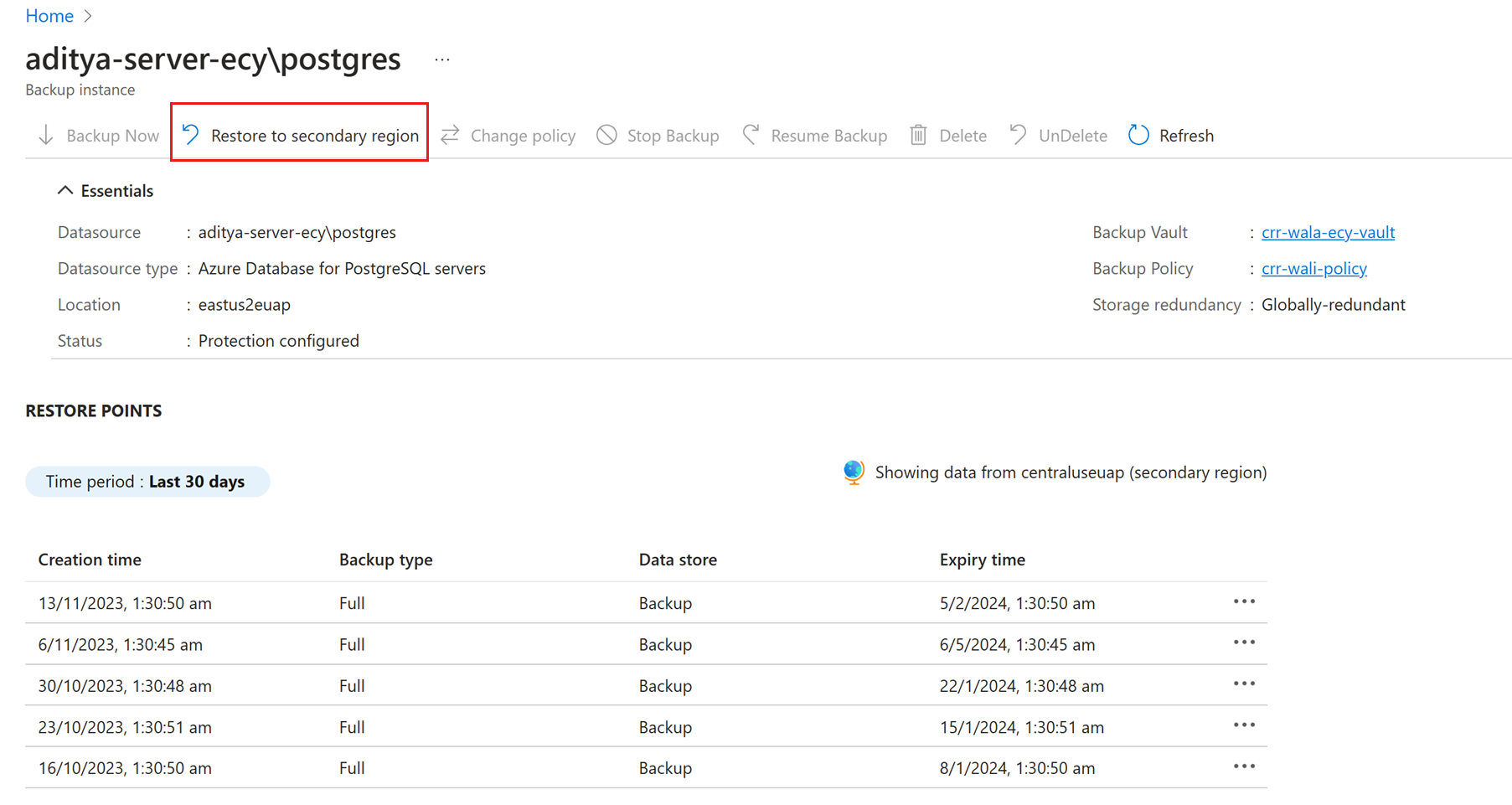Note
Access to this page requires authorization. You can try signing in or changing directories.
Access to this page requires authorization. You can try changing directories.
This quickstart describes how to enable Cross Region Restore on your Backup vault to restore the data to an alternate region when the primary region is down.
The Cross Region Restore option allows you to restore data in a secondary Azure paired region even when no outage occurs in the primary region; thus, enabling you to perform drills when there's an audit or compliance requirement.
Note
- Currently, Geo-redundant Storage (GRS) vaults with Cross Region Restore enabled can't be changed to Zone-redundant Storage (ZRS) or Locally redundant Storage (LRS) after the protection starts for the first time.
- Cross Regional Restore (CRR) with Cross Subscription Restore (CSR) is currently not supported.
Prerequisites
To begin with the Cross Region Restore, ensure that:
- A Backup vault with Cross Region Restore configured. Create one in case you don’t a Backup vault.
- PostgreSQL database is protected by using Azure Backup, and one full backup is run. To protect and back up a database, see Back up Azure Database for PostgreSQL server.
Restore the database using Azure portal
To restore the database to the secondary region using the Azure portal, follow these steps:
Sign in to Azure portal.
To check the available recovery point in the secondary region, go to the Backup center > Backup Instances.
Filter to Azure Database for PostgreSQL servers, then filter Instance Region as Secondary Region.
Select the required Backup instance.
The recovery points available in the secondary region are now listed.
Select Restore to secondary region to review the target region selected, and then select the appropriate recovery point and restore parameters. You can also trigger restores from the respective backup instance.
Once the restore starts, you can monitor the completion of the restore operation under Backup Jobs of the Backup vault by filtering Datasource type to Azure Database for PostgreSQL servers and Instance Region to Secondary Region.
Next steps
- Learn about the Cross Region Restore feature.
